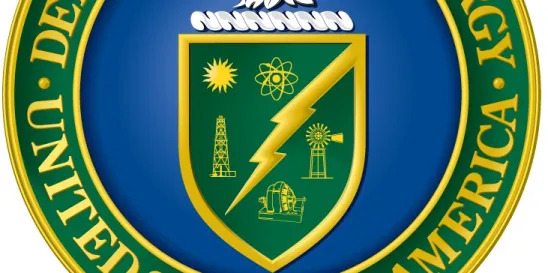On December 4, 2023, the U.S. Department of the Treasury and Internal Revenue Service (IRS) published long-awaited proposed regulations (Notice of Proposed Rulemaking) regarding the Foreign Entity of Concern (FEOC) exclusions related to Internal Revenue Code Section 30D (“Section 30D”) clean vehicle tax credits established by the Inflation Reduction Act of 2022 (IRA). On the same day, in conjunction with the Treasury proposed regulations, the U.S. Department of Energy (DOE) published proposed guidance (Notice of Proposed Interpretive Rule) providing important definitions clarifying what entities are FEOCs and the scope of application of FEOC restrictions. The Treasury proposed regulations and DOE proposed interpretive rule, if adopted, will have significant implications for U.S. electric vehicle (EV) manufacturers, the relevant supply chain, and consumers.
Background
The IRA, enacted on August 16, 2022, significantly amended Section 30D, establishing a new “clean vehicle” income tax credit of up to $7,500 to qualifying purchasers of a qualifying clean vehicle if certain requirements are satisfied, such as critical minerals and battery components requirements. Under the “Excluded Entities” provisions, the IRA imposes additional restrictions regarding EVs with battery components or critical minerals from FEOCs:
- Starting in 2024, eligible clean vehicles containing battery components manufactured or assembled by an FEOC will be disqualified from the Section 30D credit (FEOC Battery Component Rule).
- Starting in 2025, eligible clean vehicles whose batteries contain certain “critical minerals” extracted, processed, or recycled by an FEOC will also be disqualified from the credit (FEOC Critical Mineral Rule).
The IRA refers to the FEOC definition in the Infrastructure Investment and Jobs Act (IIJA). The proposed regulations are important because they clarify some concepts used in the IIJA definition of FEOC and provide guidance regarding the Excluded Entities provisions, and also provide clarity on some other definitions with respect to new clean vehicles eligible for the clean vehicle credit.
What Entities Are FEOCs
The IIJA definition states that, among other criteria, an FEOC is a foreign entity “owned by, controlled by, or subject to the jurisdiction or direction of a government of a foreign country that is a covered nation,” but leaves unanswered what constitutes ownership, control, jurisdiction or direction. The DOE interpretive rule clarifies these concepts and breaks the test into four key definitions: (1) “foreign entity,” (2) “government of a foreign country,” (3) “subject to the jurisdiction”, and (4) “owned by, controlled by, or subject to the direction.”
Foreign Entity
To be classified as an FEOC, an entity needs to be qualified as a foreign entity first. The DOE defines foreign entity to include four categories, such as a government of a foreign country, a natural person who is not a lawful permanent resident or citizen of the U.S., an entity organized under the laws of or having its principal place of business in a foreign country, and an entity organized under U.S. law but which is owned by, controlled by, or subject to direction of a foreign entity.
Government of a Foreign Country
The DOE broadly defines a government of a foreign country to include national or subnational government of a foreign country and its agencies, dominant or ruling political party of a foreign country, and current or former senior political figures of a foreign country and their immediate family members.
Covered nations are listed in 10 U.S.C. 4872(d)(2) as the People’s Republic of China, the Russian Federation, the Democratic People’s Republic of Korea, and the Islamic Republic of Iran. Thus, “government of a foreign country that is a covered nation” means the government of any of the above referenced countries.
For FEOC compliance, the proposed regulations seek to address when a foreign entity is either deemed to be owned/controlled by a covered nation government or deemed to be subject to the jurisdiction or direction of a covered nation government, so that it is classified as an FEOC.
Subject to the Jurisdiction
A foreign entity is “subject to the jurisdiction” of a covered nation government if the foreign entity (1) is incorporated or domiciled in, or has its principal place of business in, a covered nation; or (2) engages in the extraction, processing, or recycling of the critical minerals, or the manufacturing or assembly of the components, or the processing of the materials of a given battery, in a covered nation.
Owned by, Controlled by, or Subject to the Direction
The proposed regulations further provide that an entity is “owned by, controlled by, or subject to the direction” of another entity (including the government of a covered nation) if it satisfies either the ownership/direction criteria or licensing criteria set forth below:
- Controlled by Ownership or Direction
If 25% or more of a foreign entity’s board seats, voting rights or equity interests are cumulatively held (directly or indirectly) by the government of a covered nation, the entity will be classified as an FEOC.
Under the proposed regulations, subsidiaries of an FEOC, even those owned more than 25% by an FEOC, may not automatically become an FEOC if the covered nation’s level of control of the subsidiaries falls below 25%. The test for FEOC focuses on government of covered nation. A subsidiary of an FEOC would be an FEOC if it is either (1) subject to the jurisdiction of the covered nation government, or (2) controlled by a covered nation government. This means that an FEOC’s foreign subsidiary, if it is not controlled (directly or indirectly) by a covered nation government by at least 25% (board seats, equity interests, or voting rights) or subject to jurisdiction of a covered nation government, is not an FEOC.
The DOE guidance provides a few scenarios and examples to illustrate in practice how the rules above will be applied in a tiered ownership structure.
- Controlled by Licensing Arrangement
The DOE interpretive rule also provides that licensing agreements or other contracts can create a control relationship for FEOC test purpose and has proposed a safe harbor for evaluation of “effective control.” According to the proposed regulations, an entity will be deemed to be owned/controlled by another entity (including a covered nation government) or subject to its direction if, with respect to the critical minerals, battery components, or battery materials of a given battery, the entity has entered into a licensing arrangement or other contract with another entity (a contractor) that entitles that other entity to exercise effective control over the extraction, processing, recycling, manufacturing, or assembly of the critical minerals, battery components, or battery materials that would be attributed to the entity. “Effective control” is defined in the proposed regulations to include certain rights for determining the quantity or timing of production and purchasing or using output of production, or restricting access to the site of production, or maintaining and operating critical equipment to production.
To provide a reasonably bright-line test for evaluation of upstream battery supply chains that include numerous contracts and licenses, the DOE proposes a safe harbor for evaluation of “effective control.” The DOE guidance indicates that if a non-FEOC entity can demonstrate that it has reserved certain rights to itself or another non-FEOC through contract, it would not be deemed to be an FEOC solely based on its contractual relationship with an FEOC. The DOE guidance provides a list of rights covering five categories that need to be expressly reserved under the safe harbor rule.
In addition, the DOE is also considering and requesting comments on whether to offer a pre-review process in which entities could voluntarily request a review of contracts and licensing arrangements by the DOE to obtain additional certainty whether effective control by an FEOC is present.
FEOC Compliance
Qualified clean vehicle manufacturers need to comply with the FEOC Battery Component Rule and FEOC Critical Mineral Rule through two phases in 2024 and 2025, respectively. The Treasury proposed regulations provide proposed rules to determine whether applicable critical minerals (and their associated constituent materials) and battery components are manufactured or assembled by an FEOC for battery components, and extracted, processed, or recycled by an FEOC for critical minerals. The proposed regulations would require qualified manufacturers to conduct due diligence tracing of battery materials that meets industry standards. Qualified manufacturers must conduct tests regarding FEOC compliance at the following four levels: battery component (other than a battery cell), applicable critical mineral, battery cell, and battery levels.
Under the proposed regulations, FEOC-compliance for battery components would be determined at the time of manufacturing or assembly, and FEOC-compliance for critical minerals would be determined at the time of extraction, processing or recycling, which may involve multiple testing points for the entire supply chain.
The proposed regulations would provide temporary transition rules providing exceptions and alternatives to some specific physical tracing requirements for critical minerals and associated constituent materials and certain low value materials contained in battery cells. Those exceptions and alternatives would apply to certain qualified manufacturers during a transition period expiring on January 1, 2027.
The proposed regulations would also provide an upfront review system starting in 2025. For new vehicles placed in service in 2025 or later, the IRS would track FEOC compliance via a compliant-battery ledger and automakers would be required to submit to the IRS annually an estimate of the number of FEOC-compliant batteries they expect to procure each year with supporting documents.
Conclusion
The proposed regulations provide more clarity and certainty regarding the IRA’s FEOC requirements, such as the definitions of FEOC and related statutory terms and FEOC restrictions and compliance.
- Transition Rules and Safe Harbor. Based on the current reality of the clean vehicle supply chain, the proposed regulations also provide transition rules for qualified manufacturers and a safe harbor for certain licensing arrangements.
- Impact on U.S. EV Manufacturers and Suppliers. The proposed regulations, if adopted, would apply to clean vehicles placed in service in 2024. Due to China’s dominant role in the existing EV battery supply chain, the FEOC restrictions would add significant pressure to U.S. EV manufacturers and relevant suppliers and could significantly affect the number of vehicles eligible for clean vehicle tax credits in 2024. In the meantime, more Chinese battery manufacturers may seek to establish relationships with U.S. EV manufacturers through the licensing arrangements in an effort to address the proposed regulations.
- Additional Statutory Requirements. In addition to the FEOC requirement, to be qualified for the Section 30D credit, clean vehicles must continue to meet additional statutory criteria, such as requirements that are based on a specified schedule, certain required percentages (measured by value) of (1) battery components manufactured or assembled in North America, (2) critical minerals contained in batteries extracted or processed in the U.S. or a country with which the U.S. has a free trade agreement or be recycled in North America; a requirement that vehicles undergo final assembly in North America; and requirements regarding vehicle prices.
- Comment Periods. The Treasury and DOE are accepting written comments from stakeholders for the proposed regulations. The deadline for comments on the Treasury’s proposed regulations is January 18, 2024. The deadline for comments on the DOE’s proposal is January 3, 2024.





 />i
/>i

